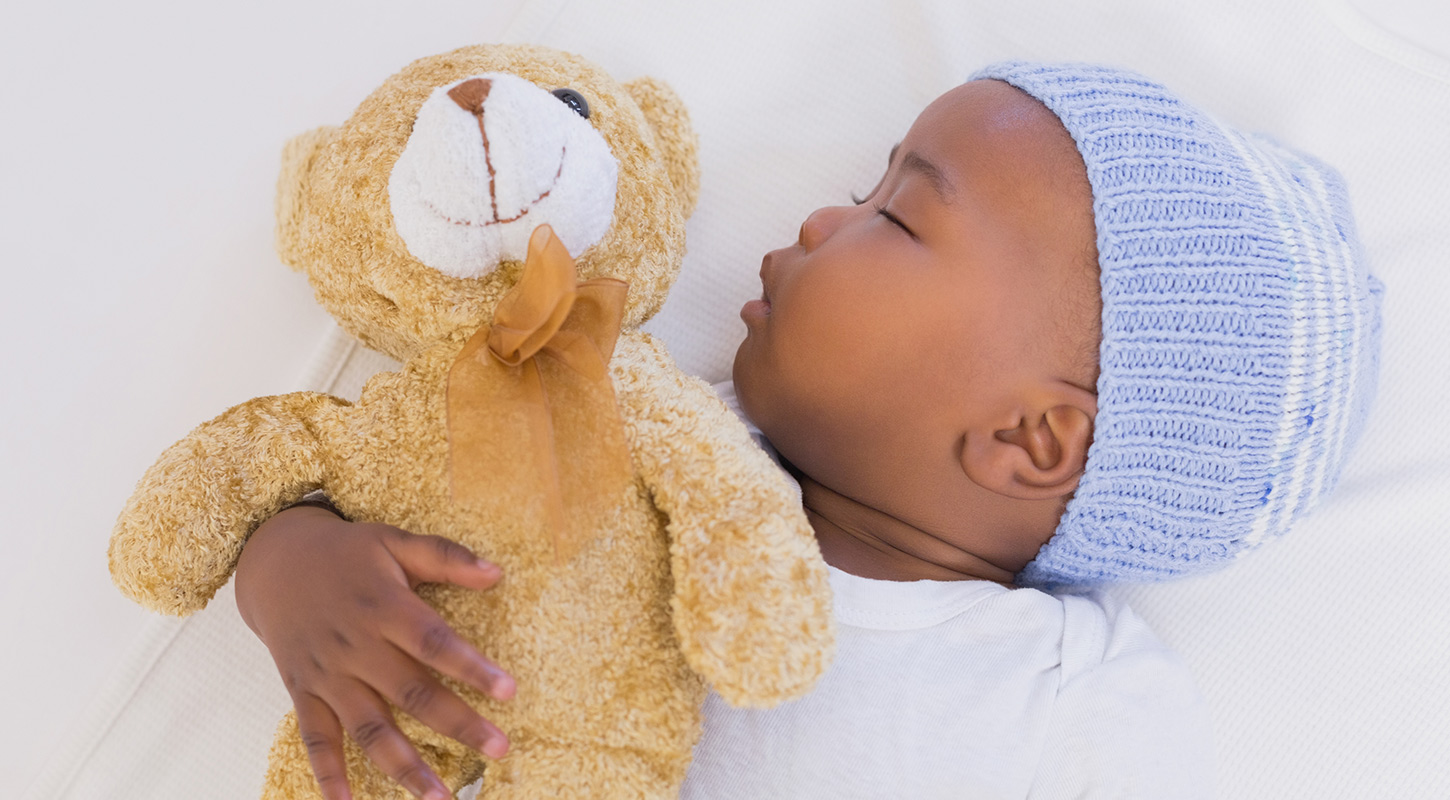4 Safe Sleeping Tips to Help Reduce Your Baby’s Risk for SIDS

4 Steps to Help Parents Prevent SIDS
Sudden infant death syndrome (SIDS) is the leading cause of death for babies between 1 month and 12 months old. It is the unexplained, unexpected death of an infant, and it is often determined after a thorough investigation.
While many SIDS cases remain a mystery, experts believe unsafe sleeping environments—such as a crib with blankets, toys or pillows—can result in accidental sleep-related deaths. Fortunately, parents, grandparents and other caregivers can help reduce the risk for SIDS and sleep-related accidents by following these 4 steps.
1. Always place babies on their backs to sleep.
Babies should never sleep on their stomachs or sides. Instead, you place babies on their backs, according to Kristi Davis, registered nurse, childbirth educator and board-certified lactation consultant at Baptist Memorial Hospital for Women.
“Back in the mid-90s, we noticed that when babies slept on their backs, a greater percentage of babies did not die of SIDS,” said Davis. “Health care providers and pediatricians began educating parents and caregivers on the importance of placing babies on their backs, so as not to block the airway. Because of the increased awareness and education around sleeping placement and the dangers of accidental suffocation, the SIDS rate dropped 50 percent.”
The Centers for Disease Control and Prevention (CDC) and the American Academy of Pediatrics both support placing a baby on his or her back, including for naps throughout the day, at night and while traveling.
“Car seats are great for transport—and of course, it’s fantastic when babies fall asleep in them,” said Davis. “But car seats are not intended to be a sleeping device. Parents, grandparents, aunts and uncles need to remove a sleeping baby from a car seat and place him or her flat to sleep as soon as possible.”
2. Use a safety-approved crib and firm mattress.
CDC recommends choosing a crib, bassinet or cradle that is no more than 10 years old and has been certified safe by the Juvenile Products Manufacturers Association. Signs a crib is unsafe include loose or modified parts and gaps between the crib and mattress.
According to Davis, parents should also make sure the sleeping space is bare.
“Keep everything out of the crib,” said Davis. “Blankets, toys, bumpers and pillows—these items can twist around a baby’s head or push against the face. A bare crib is the safest sleeping environment for an infant.”
In addition, Davis recommends using a firm mattress that can properly support a baby’s growing spine and bones. An organic cotton mattress is not only firm but comfortable for infants.
3. Dress babies lightly for sleep.
While experts encourage an empty crib at bedtime, some parents worry their infant will become cold or uncomfortable without a soft blanket to keep them warm at night. However, according to Davis, cooler environments and less clothing make breathing easier for babies.
“Many of us think we need to wrap babies in several layers of clothing, but that’s not necessary,” said Davis. “They are just as comfortable as we are. To help them sleep cool, I always recommend no more than three things on the baby. They should have their diaper, an undershirt or onesie and a wearable blanket or sleeper.”
Set a room temperature that feels comfortable for average adults, and monitor your baby for signs of overheating, such as rosy cheeks and damp hair.
4. Avoid sharing a bed with an infant.
Bed-sharing, or co-sleeping, means you and your baby sleep together in the same bed. This can be a dangerous practice, as studies have shown bed-sharing increases the risk of SIDS. According to Davis, parents and babies can sleep in the same room but not in the same bed.
“Our beds are made for grown people,” said Davis. “We have soft pillowtop and memory foam mattresses. These are designed for adult comfort, whereas babies need to sleep on a firm surface.”
Bed-sharing also poses other dangers, including accidental suffocation. Babies can fall off the bed or get stuck under blankets or an adult’s body. While health care professionals and researchers say co-sleeping is off limits, there are ways to achieve much needed cuddle time with new babies.
“You can still snuggle with your baby—just don’t do it in your soft, cushy bed,” said Davis. “You’ll have to lie on something firm like the floor. Put your baby on the floor beside you, but don’t share a bed.”
Learn more about maternity care, childbirth services and breastfeeding counseling at Baptist, or find a nearby maternity specialist on our Find a Doctor page.
